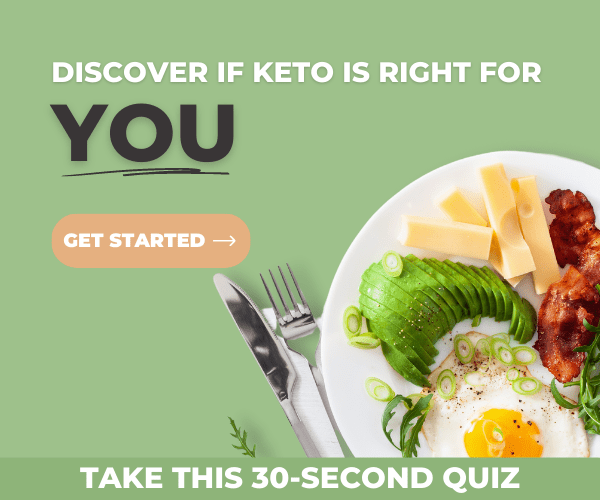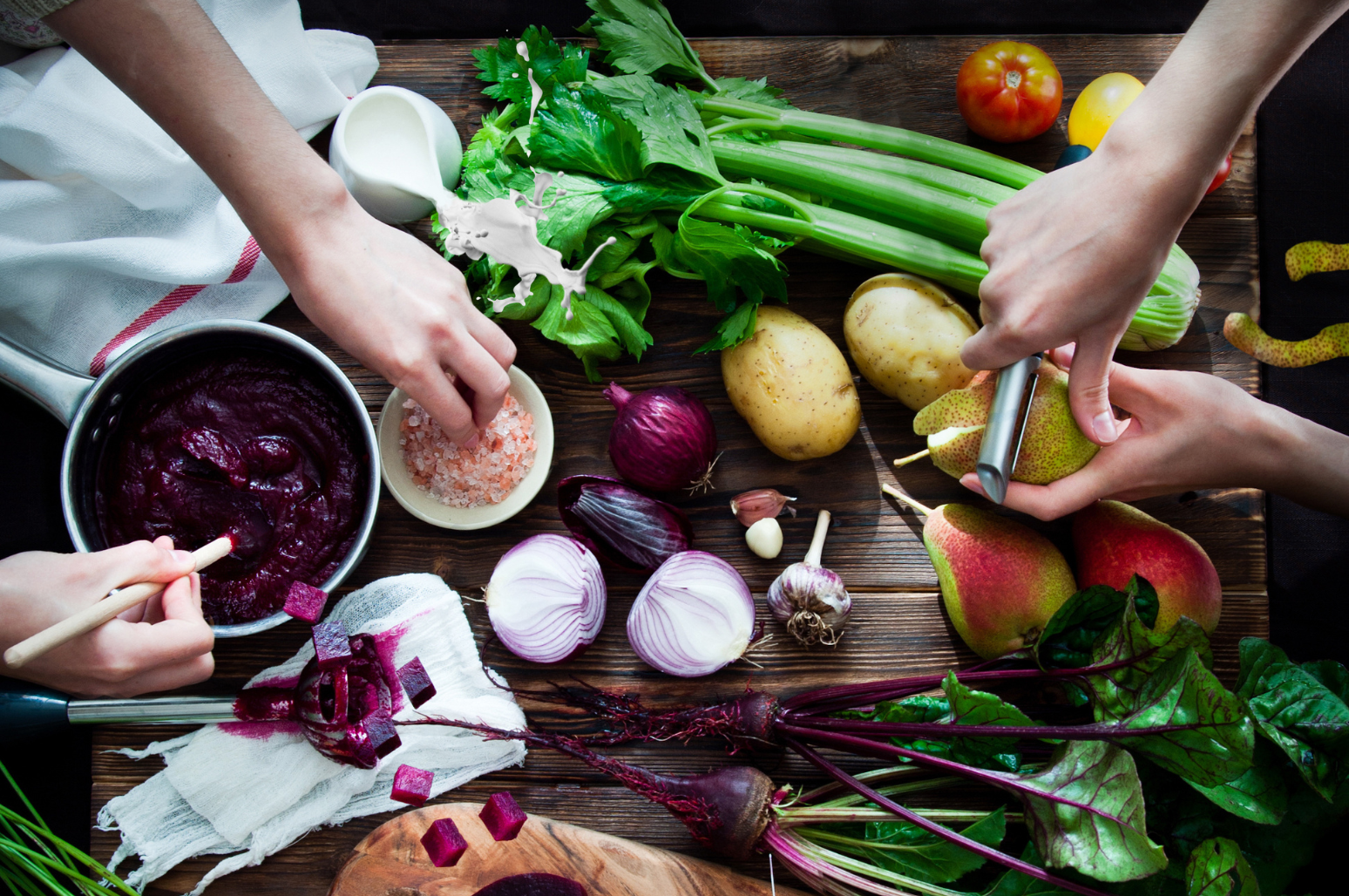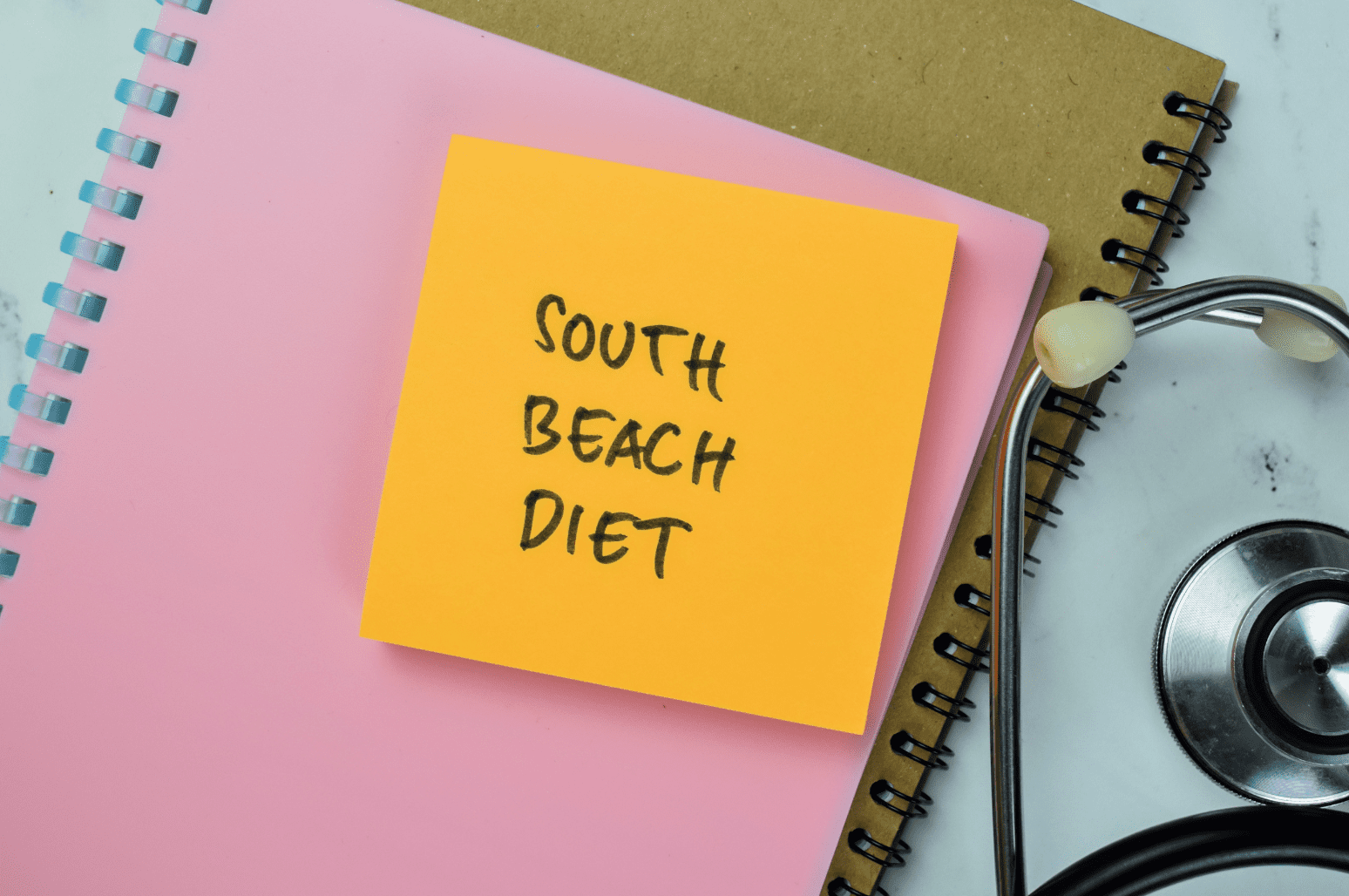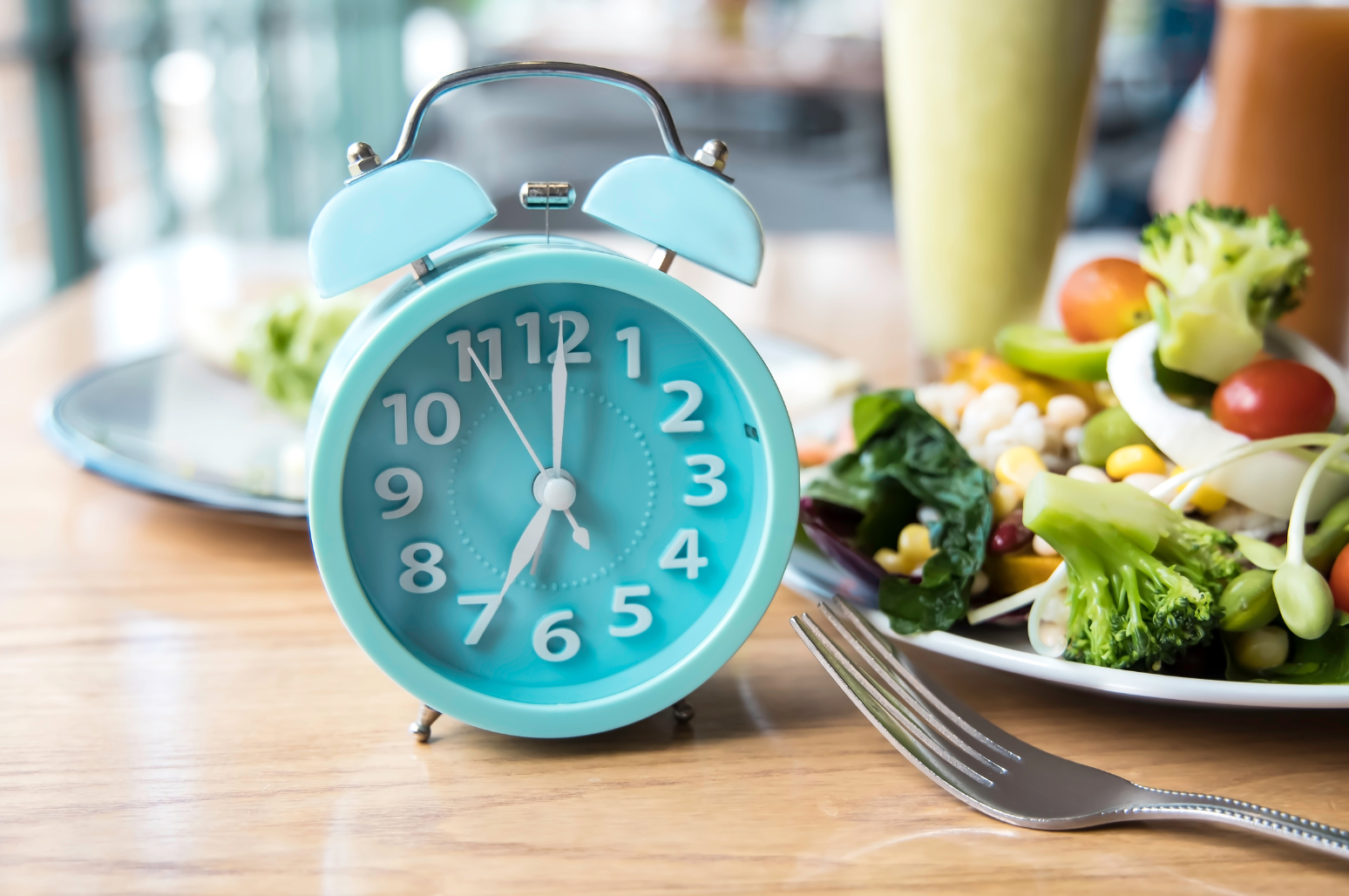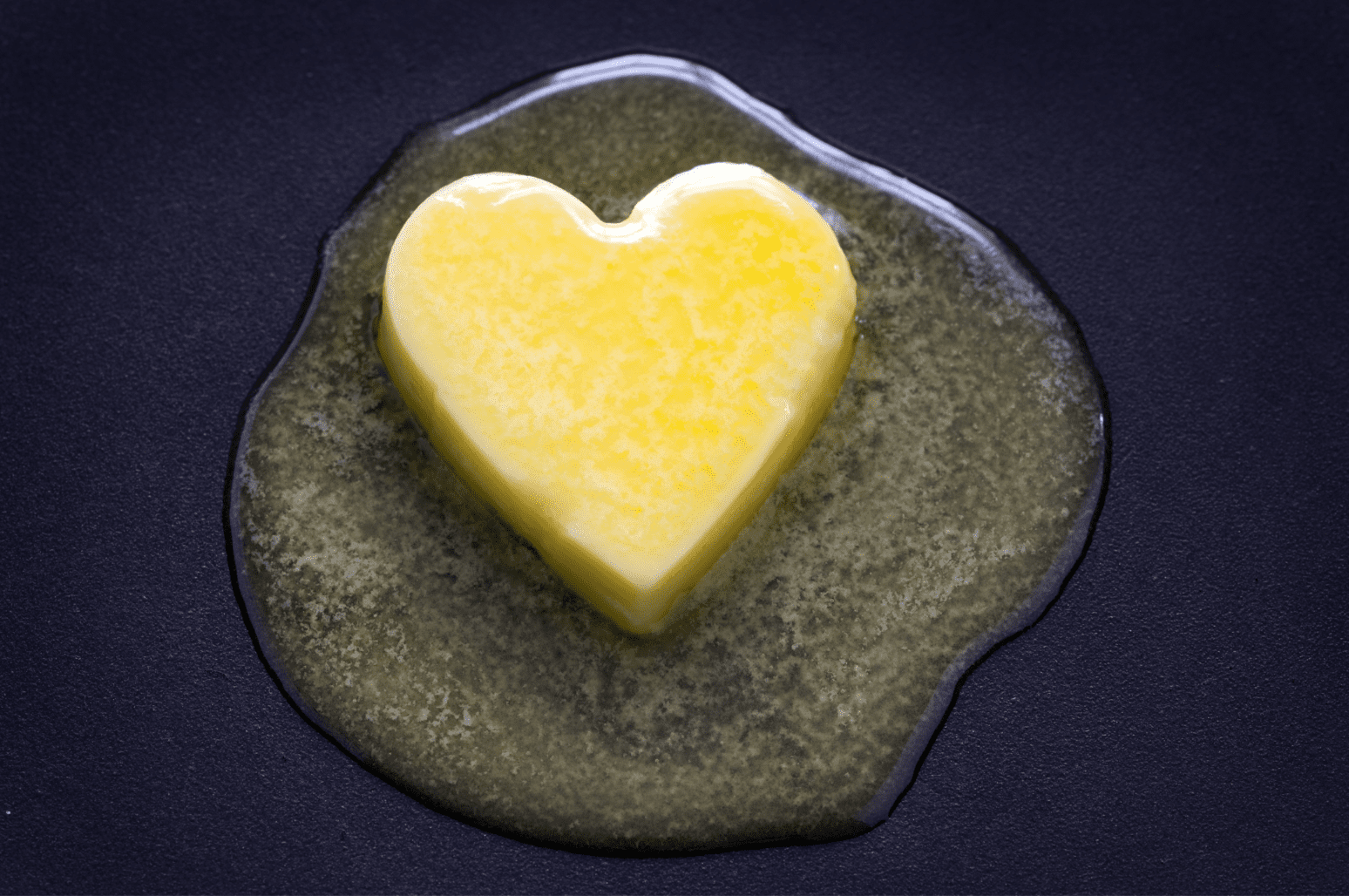
You’re taking the plunge, breaking off your toxic relationship with all that unhealthy sugar, and following a ketogenic diet. If you’re unsure what to eat, cook, or snack on, you’re more likely to fall off the wagon and end up further away from your health or fitness goals.
This article is a detailed guide to keto-friendly food choices that should answer some of your questions and help you feel more comfortable settling into this way of eating. What should you look for on the nutrition label, and where can you source the best healthy fats? Which foods can you eat, and what should you avoid? Is fruit keto? Let’s look at keto tips and food choices to keep you on track.
Understanding the Ketogenic Diet
What Is Keto?
The ketogenic diet involves consuming moderate protein, drastically dropping your intake of sugar and carbohydrates, and increasing your intake of healthy fats. By reducing carbohydrate intake, the keto diet forces your body to burn fat instead.
In the literature, a ketogenic diet has been proven to aid weight loss and reduce the symptoms of numerous chronic health conditions, including diabetes, epilepsy, Alzheimer’s disease, Parkinson’s, and cancer. [1] [2]

To find out if you’re in ketosis, you can test your ketones in different ways, including through blood testing, urine strips, and breath measurements. Some people prefer not to test, and they’re comfortable knowing they’re in ketosis because they feel great and have been sticking to the diet.

How to Identify Keto-Friendly Food
What to Look for on the Nutrition Label
Don’t fret when it comes to navigating the aisles of your local grocery store. Here are simple tips to help you determine what’s keto and what isn’t.
The nutrition label should be higher in fat and very low in carbs. Protein, fiber, and fat work for keto, but you’ll need to be mindful of the carb count. The point is to avoid starches and sugars that impact blood sugar and hinder ketosis.
Your body absorbs simple and complex net carbs that are present in fruits, syrup, vegetables, honey, and more. When you eat carbohydrates, digestive enzymes in your intestines break down the carbs and starches into individual sugar units.
You’ve probably heard the term net carbs. You need to figure out your food’s net carb count, so you can stay under your total net carb allowance for the day and remain in ketosis. For most keto dieters, that’s below 50 grams of net carbs. In other words, you can’t eat more than 50 grams of net carbs in one day or you’ll stop producing ketones, and your body will switch back to burning glucose (sugar) instead. Since fiber isn’t digested like other carbs are, you can subtract the grams of fiber from an item’s total carb count to get the net carb count.
Here’s a simple formula you can use to check the carb count of foods you’re unsure about:
Total carbs – fiber – certain sugar alcohols = net carbs
What About Sugar Alcohols?
Both fiber and sugar alcohols are not digestible, and don’t spike your blood sugar in the same way as regular carbs, so you don’t count them in your net carb count. Be mindful of some sugar alcohols like maltitol, which could have more of an impact on blood sugar for some people. [3] Most sugar alcohols don’t count, but you should probably at least partially count glycerin, isomalt, sorbitol, and maltitol. You can subtract half of the carbs from those sugar alcohols. Some people with diabetes decide to subtract only half of the carbs from all sugar alcohols just to be on the safe side. Erythritol, lactitol, xylitol, and mannitol are the best options for keto.
What About Fiber?
Fiber feeds the healthy bacteria (microbiome) in your digestive system. Bacteria in your digestive system ferment soluble fibers into beneficial short-chain fatty acids (SCFAs) that are known to improve gut health! This is why when you’re calculating net carbs, you can subtract most sugar alcohols and fiber from the total carb count to give you the true impact of the carbs that spike your blood sugar.
Isomaltooligosaccharide (IMO) is an exception. Most keto dieters only subtract half of the fiber if it is IMO.
Whole foods like carrots and avocados have natural fiber. You can use the USDA Food Composition Databases to find the nutrition, carb, and fiber content of thousands of foods. You can then subtract the fiber from the total carbs to figure out the net carb counts of each food. For example, let’s say you’re craving sweet strawberries, but you’re not sure if they’re keto-friendly. You can use the USDA Food Composition Databases to check the ‘total carbohydrates by difference’ to give you the first starting number in your formula. One cup of sliced raw strawberries has 12.7 grams of total carbs, but now you need to subtract the fiber, which is 3.32 grams.

12.7 – 3.32 = 9.38
So one cup of sliced raw strawberries has 9.38 grams of net carbs, which is acceptable for most keto dieters when they want a sweet treat, even if they eat the entire cup. [4]
To calculate net carbs in a processed or packaged food, you can subtract the fiber from the total carbs on the nutrition label. Outside the United States, the line showing the total carbohydrates typically has the fiber removed and listed separately.
Remember, counting net carbs isn’t 100% accurate; it’s just to help you stay on track, and it’s up to you whether you want to count calories as well as total or net carbs. You’re also less likely to go over your carb count for the day if you stick mainly with meat, fish, or seafood and non-starchy vegetables and avoid packaged foods.
Foods to Eat on Keto
Map your diet around nutritious, low-carb foods, including:
- Pastured eggs
- Poultry
- Grass-fed meats and wild game (sausage, ham, steak, etc.)
- Wild-caught fish and seafood
- Full-fat butter, cream, and cheese
- Healthy fats and oils, such as coconut oil and olive oil
- Low-starch veggies, such as Bok choy, broccoli, and peppers
- Cocoa and unsweetened dark chocolate
- Full-fat dairy
- Seeds
- Nuts
- Nut butter
- Nut milk
- Avocados
- Low-carb fruits (berries)

Most meat and seafood have virtually zero carbs. Foods richer in fat are an excellent idea for a ketogenic diet, for instance, meats, seafood, eggs, avocados, and full-fat dairy. The same goes for protein-rich foods like meats, seafood, eggs, and nuts.
Enjoy a range of healthy herbs, salt, pepper, and keto-approved seasonings, sauces, and condiments. Watch out for commercial sauces, condiments containing high-fructose corn syrup, and added sugars like dextrose–a sugar derived from corn.
If you’re unsure if a food is truly keto-friendly, remember you can check the food database and use the formula to figure out the net carbs. You can also use the search bar at Ketogenic.com, where we have a growing collection of articles and info on the nutrition and carb content of lots of whole foods.
Top Low-Carb Fruits and Veggies
Fruits are nature’s sweet treat containing the fruit sugar fructose. Lots of fruits are too high in carbs and sugar to keep you in ketosis, but there are some you can enjoy. The top low-carb fruits are:
Keto dieters may consume some other fruits in moderation, such as kiwi and melon. Among the top low-carb veggies are:
- Cabbage
- Cauliflower
- Bok choy
- Asparagus
- Cucumber
- Celery
- Leafy greens (arugula, spinach, collards, etc.)
Limit or avoid veggies with a moderate or higher carb count, like butternut squash, sweet potatoes, and yams. You can usually eat rutabaga and cooked carrots in moderation.
What About Dairy?
Dairy is processed from animal milk, including cows, goats, and sheep. Dairy is made up of lactose (milk sugar), casein protein, whey, and fatty acids.
Lactose sugar shows up in varying quantities in the many versions of dairy. Lower-fat dairy usually contains more sugar. Some research suggests that dairy may be linked to insulin resistance–a condition where the cells in your body become resistant to the insulin hormone, which helps you control blood sugar levels. Insulin resistance is a precursor condition to diabetes. [5] Other keto dieters believe dairy isn’t a big issue when it comes to insulin resistance, and they enjoy plenty of full-fat, unsweetened dairy products and still stay in ketosis.

Keto-Friendly Drinks and Beverages
You don’t have to just stick to water on keto; you can choose from interesting and flavorful drinks.
Flavored water
Flavor your water by adding lemon, berries, or cucumber.
Coffee
Coffee is essentially carb-free, and keto dieters often start their day with a coffee, typically with added fat like butter, coconut butter, MCT oil, or a little heavy cream. You can sweeten your teas and coffees with a keto sweetener. Choose from monk fruit, stevia, erythritol, and other keto sweeteners. Even a drop or two of vanilla extract adds sweetness to a coffee. Get fancy and add collagen powder, heavy whipping cream, and a dash of cocoa powder or ground cinnamon.
Tea
As long as there’s no added sugar, most teas are acceptable on a low-carb diet, including black teas like Earl Grey and green teas like matcha.
Hot Chocolate
When you’re in the mood for chocolate, why not enjoy a keto hot chocolate? Don’t forget the coconut cream or heavy cream.
Fizzy Drinks

When you want a fizzy drink, kombucha is a healthy fermented beverage packed with probiotics to boost your gut microbiome. Most kombuchas are suitable for keto but be sure to check the label for added sugars that threaten ketosis.
Sparkling water and carbonated water like La Croix have all the bubbles and none of the sugar. Zevia is a keto-approved soda sweetened with stevia. Mix your La Croix, Zevia, or sparkling water with a berry or hibiscus tea.
Diet sodas
Of course, traditional sodas are off the menu, but diet sodas are sweetened with artificial sweeteners that don’t provide any calories or carbs. While some people have successfully lost weight while drinking diet sodas on keto, keep in mind that artificial sweeteners have been associated with negative health effects, including a higher risk of diabetes and weight gain.
Keto Slushy
To cool down, try a 2-minute keto slushy.
Smoothie
Choose from a range of keto smoothie recipes here at Ketogenic.com. With the right fruits and fats, a keto smoothie is an excellent way to fuel your day.
What About Alcohol?
Just because many alcoholic drinks are sugar-loaded doesn’t mean there aren’t some keto-friendly options out there.
Hard Seltzers
Hard seltzers tend to be lower in calories and sugar. For example, one can of White Claw has around 2 grams of carbs. Be wary that carbs and calories add up as you drink more throughout the evening.
Wine
High-sugar sweet dessert wines like Moscato and Sauternes aren’t a good choice for keto, but you can enjoy a glass or two of lower-carb wines like pinot grigio, pinot blanc, chardonnay, merlot, cabernet sauvignon, and pinot noir.
Liquors

Pay attention to what your liquor is mixed with because that’s where the sugar comes from. Avoid sodas and juices, and mix your liquor with diet soda, soda water, and a lemon or lime slice instead. Or go for straight liquor without added flavoring. Think tequila, rum, and vodka. One shot of tequila (around 42 grams) has 0 grams of carbohydrates. You can always add a drop or two of a keto water flavor enhancer, such as Mio [6]
Beer
One can of beer may not be enough to kick you out of ketosis in one sitting, but most beers are too high in carbs for keto dieters to include in their daily carb count. Try light beer or a beer marketed as low-carb, such as Miller Lite, which has 3 grams of carbs, or Corona Premier, which has 2 grams of carbs. When you think of light beer, you might think of Bud Light, but that actually has 7 grams of carbs per bottle, so it’s a good idea to go with other options. Always check the carb count if you’re unsure.
Foods to Avoid on Keto

Limit or avoid the following foods on keto:
- Traditional grain bread, starchy processed sweets, and baked goods
- Grains and refined grain products
- Most beans or legumes, such as peas and kidney beans
- Sweets and sugary foods like ice cream
- Sweetened sugary beverages and fruit juices
- Starchy tubers and vegetables, such as white potatoes
- Certain fruits
- High-sugar sauces like commercial BBQ sauce
- Certain alcoholic beverages
You can consume green beans in moderation.
Stay away from pasta, rice, potatoes, bread, and other white foods that are higher in starch, because your body has to break that starch down into individual sugar units. Keto breads and bread recipes are available if you’re really missing bread.
Don’t grieve pasta too much because there are plenty of alternatives, from spaghetti squash to palmini noodles and shirataki noodles. When you want rice, there’s always cauliflower rice or konjac rice.
Keto Meal Inspiration

Get inspired with these sample menus from our talented recipe creators at Ketogenic.com:
Day 1:
Breakfast:
A BLT scramble provides the fuel you need in the morning. Don’t forget to add slices of avocado for more healthy fat.
Lunch: After a big breakfast, if you’re not skipping lunch, you’ll probably want to keep it light and nutritious with a broccoli and almond soup or a cauliflower and zucchini soup.
Dinner: Get your omega-3 fatty acids with this coconut-crusted haddock recipe, which serves the fish on a bed of lemon pesto zoodles.
Snacks: Munch on some pork rinds or boiled eggs for a protein-packed snack with zero carbs.
Day 2:
Breakfast: Enjoy fruity sweetness in the morning with this quick 5-minute keto cherry smoothie.
Lunch: Salmon salad lettuce wraps or crunchy chicken cabbage bowls don’t even require you to turn on the oven. In less than 15 minutes, you could be chowing down on a tasty keto lunch.
Dinner: Going keto doesn’t mean saying goodbye to pizza. Choose from plenty of alternatives, like this tempting fathead New-York style keto pizza made with almond flour, mozzarella cheese, cream cheese, tomato, basil, and pepperoni.
Snacks: Keto cheez-its or crispy kale chips make a quick and easy snack. If you’re craving chocolate, why not indulge in a keto chocolate fat bomb?
Don’t forget about dessert. Peruse the range of mouthwatering dessert recipes here at Ketogenic.com.
Tips for Staying Keto While Eating Out

You can still eat out and keep it low-carb with these tips.
1. Avoid Soft Drinks
Get a keto beverage instead, like diet soda, sparkling water, unsweetened tea or coffee, or a simple lemon water.
2. Avoid Bread and Breaded Products
Order your favorite meat, poultry, or fish, and make sure it’s not breaded or coated in a sugary sauce or marinade. Go for grilled over fried and breaded.
3. Replace Pasta, Potato, and Rice
Replace pasta, potato, and rice side dishes with low-starch veggies and a side salad. Most alfredo sauces are keto-friendly, so you could replace the pasta noodles with squash or veggies and add some cheese. Some places are even offering konjac noodles or cauliflower rice. If you’re at a Tex-Mex joint, see if you can get your burrito made as a “bowl” instead of with a tortilla.
4. Choose a Salad
Go for a salad with chicken, cheese, olives, avocados, and lower-carb veggies and fruits like berries, tomato, and onion. Avoid the croutons and bring your own olive oil packets, use a low-carb, high-fat dressing, or just ask for oil, vinegar, and lemon.
5. Watch the Sauces
You’ll need to steer clear of ketchup and other sauces that are typically sugar-loaded.
6. Ask About the Soup
Select a broth or cream-based soup. You may need to ask if there is added flour or high-carb wheat thickeners.
7. Ditch the Bun
Go bunless or ask for your burger or sandwich lettuce wrapped instead.
8. Eggs and More Eggs
Go for the omelets and scramble bowls. Add avocado!
9. Half Your Portion
Many restaurant meals are large, so you could always take the rest home for later to lower your carb count in that one sitting.
10. Check the Nutrition Facts
Most restaurants, particularly fast-food restaurants and chains, are required to have nutrition menus, so you can check if your meal works for your keto macros.
Keto-Safe Foods by Cuisine
One day you’re in the mood for Chinese, and the next, you’d prefer Italian. Keto is more fun with variety.
Here are tips for finding keto-safe foods by cuisine:
Chinese
Chinese restaurants usually offer noodle and rice dishes, but you can find crispy duck with lettuce wraps, steamed or grilled meat and veggies, and other keto options. You could always ask if the soup has any added sugar.
Meats or meals may be coated with cornstarch or tapioca flour, so you might want to ask how the meat or meal is prepared. Ask if they offer cauliflower rice or vegetable noodles or replace your rice with extra veggies or a salad. Add water chestnuts and a fried egg for more flavor.

Roasted pork belly, roast duck, and egg drop soup are usually keto-approved. Ditch the wontons, egg rolls, rice, and noodles. Orange sauce, sweet and sour sauce, oyster sauce, and most other sugary sauces are just too high in sugar for keto macros.
Mexican
Mexican restaurants also offer lots of rice and corn flour tortillas that aren’t suitable for keto. Go for grilled meats that aren’t breaded and opt for a naked burrito bowl piled high with veggies, salad greens, meat, sour cream, bacon, cheese, and guacamole instead. Some sauces are actually keto-friendly, like the creamy jalapeno sauce at Taco Bell, which only clocks in at 1 gram of carb. The creamy chipotle sauce is less than 1 gram.

Swap the beans, Fritos, potatoes, rice, nachos, tortillas, and tacos for more veggies and meat. You could even bring your own coconut or almond flour tortilla or wrap. Steak, shrimp, or chicken fajitas–without the wrap, or with a low-carb version you’ve brought–work well for keto dieters.
Italian
Italian cuisine might seem off-limits due to the high-carb pizza and pasta staples; however, Italians also know how to make a steak! Replace the pasta noodles with veggies or enjoy a steak with added butter and veggies or a salad on the side.
Begin with salami, carpaccio, or a cheese platter, and then enjoy grilled fatty fish like salmon or tuna for your main course. Load up on veggies and stick with vinaigrettes, aioli, bearnaise sauce, and other sauces made with olive oil, butter, mayonnaise, heavy cream, coconut oil, and cream cheese.

Dishes like costillas de res (braised beef short ribs) and osso buco are filling, and you can keep it low carb by asking the server to hold the reduction or sauce on the beef and swap the rice, bread, or potatoes for asparagus or broccoli.
Italian restaurants are known for delicious salads like antipasto salad, Caprese, or Caesar salad. Avoid the croutons and any sugary glazes. Order tea or coffee instead of a sugary dessert.
Indian
Once again, you’ll need to watch out for the rice and any sauces that might contain sweeteners. Go for a lamb tikka or a chicken shashlik–a grilled chicken dish with peppers and onions. Your main concerns are breaded foods, bread, potatoes, rice, noodles, and certain sauces. Stick with meat, cheese, fish, and low-carb veggie dishes like stir-fries and kabobs.

You may want to ask if your dish is prepared with flour or sugar just to be sure. Dishes like a tandoori murgh feature chicken marinated in yogurt, ginger, garlic, lemon juice, and tandoor spices, making it the perfect keto choice. Ask for a mixed greens salad with oil and vinegar instead of lentils, rice, or potatoes.
Thai
Thai food contains plenty of keto-approved ingredients, for instance, coconut milk, meats, fish, low-carb veggies, tofu, and curry. You still need to be wary of oyster sauce and added sugars (brown sugar or rock sugar are often added to Thai curries and other dishes). Hold the rice and noodles, make sure your meat isn’t breaded, and go for a meat and veggie stir-fry dish without brown sauce.

While many of the sauces, such as peanut sauce, aren’t keto-approved, you can enjoy stir-fry dishes like pad prik king featuring red curry paste made with red chili peppers, garlic, lemongrass, lime, peanut or coconut oil, Thai ginger, coconut milk, and spices. You could always ask for the dish without the sauce or have the sauce on the side to use sparingly. You can always ask the server if you’re unsure if a sauce or meal has added sugar or flour.
Tom yum or tom kha soup are usually low-carb options. Inquire if you can have pad thai with shirataki or zucchini noodles as a substitute.
Japanese
Japanese restaurants are renowned for sushi and fish. You could enjoy sashimi–fresh raw fish served with soy sauce. Some Japanese and poke bowl restaurants may offer raw fish bowls in which the fish and vegetables are served over greens, rather than rice. You could order also edamame with grilled meat or fish.

Keto Fast-Food Options
Fast food isn’t necessarily synonymous with carbs. Here are top tips for staying keto at fast food joints:
- Restaurants often have nutrition information available online, such as in this McDonald’s or Chipotle online nutrition calculator. This allows you to plan your meal before you go and figure out the carb count.
- Go bunless and skip the high-carb toppings, including honey mustard sauce or BBQ sauces, commercial ketchup, and breaded onions. Get a lettuce wrap and add a side salad for more fiber.
- Choose keto toppings like mayo, avocado, fried egg, lettuce, tomato, and red onions.
- When you’re at Chipotle, go for the Chipotle Steak Burrito Bowl with lettuce, sour cream, salsa, cheese, and no rice or beans, which clocks in at around 6 grams of carbs. [7]
- McDonald’s and other places have eggy breakfasts and scrambled egg bowls. For example, without hash browns or biscuits, the McDonalds’ Big Breakfast only has 2 grams of carbs. You could always order another egg, as well; there’s only 1 gram of carbs in a single egg. [8]
- Try the Grande Toasted Breakfast Burrito at Taco Bell. Pass on the tortilla wrap, potatoes, and beans, and ask for your scrambler in a bowl; you’ll get a bowl of bacon, eggs, tomatoes, sour cream, guacamole, and your choice of sauce. Add the creamy chipotle sauce for a grand total of only 5 grams of net carbs.
- You may think Dunkin’ isn’t possible on keto, but you can enjoy the breakfast sandwiches without the bread, leaving you with bacon, egg, cheese, and all the fillings. Ask if you can replace the bread with two slices of ham. Bring your own keto sweetener and grab an unsweetened coffee. Some Dunkins offer unsweetened cream as a creamer for your coffee, or you could bring your own.
- At Subway, you can create your own bowl or salad with turkey breast or roast beef, lettuce, cucumber, cheeses, low-carb vegetables, and a keto-friendly dressing like red wine vinegar, Chipotle Southwest sauce, or yellow mustard. A tuna salad is another tasty option.
- Chick Fil A isn’t all fries, buns, and breading. Select the grilled Chick Fil A breakfast filet or the Hashbrown Scramble Bowl with grilled filet and no hash browns. Grilled chicken and scrambled eggs have only 1 gram of carbs, and you can add cheese. Pair your breakfast with a coffee. Depending on the individual and their dietary needs, keto dieters may opt for the original Chick-Fil-A breakfast filet, which has 9 grams of carbs.
- Low-carb salads are another option. For example, the Wendy’s Parmesan Caesar Chicken Salad has around 5 grams of net carbs (just ditch the croutons). The Southwest Avocado Chicken Salad has around 10 grams of net carbs.
Wholesale Keto Shopping

Shopping at big wholesale stores like Costco allows you to buy bulk food items at a lower price. Here are some basics you may want to pick up when you shop keto at Costco:
Meats
- Ground beef
- Salmon and fish
- Chicken thighs or drumsticks
- Grass-fed steak
- Uncured bacon
- Uncured beef jerky
- Canned tuna
Dairy
- Eggs
- Unsweetened almond milk
- Cream cheese
- Cheese
- Heavy whipping cream
Pantry staples
- Cocoa powder
- Almond flour
- Almond butter (no added sugar)
- Coconut oil
- Olive oil
- Keto sweeteners
- Pickles
- Primal Kitchen sauces (check carb count)
- Heavy whipping cream
- Coconut milk
- Bone broth
- Collagen
- Himalayan salt
- Herbs and spices
Produce
- Cauliflower
- Lettuce
- Brussels sprouts
- Broccoli
- Leafy greens
- Berries
- Zucchini
- Tomatoes
- Olives
- Asparagus
Frozen foods are sometimes handy to have in your freezer. Grab some frozen cauliflower rice and broccoli, beef patties, berries, and frozen seafood.
Snacks and Treats
- Pork Rinds
- Eggs (for boiled eggs)
- Jerky
- Nuts
- Seeds
- The Keto Garden Snack Mix
- Whisps Cheese Crisps
- Jack Link’s Meat Snacks
- Coconut Keto Clusters
- King Cheese Spirella Minis
- Oven-Baked Parm Crisps
- Kiss my Keto Gummies
- Prosciutto
- Nut butter
Sometimes you need keto cookies ready to go, and High Key mini chocolate chip cookies are Ketogenic certified with only 1 gram of net carbs per serving.
You can even find keto bread, Crepini egg wraps, delicious garlic sausages, and hibiscus tea to mix things up a bit.
References
Westman, E. C., Yancy Jr, W. S., Mavropoulos, J. C., Marquart, M., & McDuffie, J. R. (2008). The effect of a low-carbohydrate, ketogenic diet versus a low-glycemic index diet on glycemic control in type 2 diabetes mellitus. Nutr Metab (Lond), DOI: 10.1186/1743-7075-5-36
Hemingway, C., Freeman, J. M., Pillas, D. J., & Pyzik, P. L. (2001). The ketogenic diet: A 3- to 6-year follow-up of 150 children enrolled prospectively. Pediatrics, 108(4), 898-905. DOI: 10.1542/peds.108.4.898
Hiele, M., Ghoos, Y., Rutgeerts, P., & Vantrappen, G. (1993). Metabolism of erythritol in humans: Comparison with glucose and lactitol. British Journal of Nutrition, DOI: 10.1079/bjn19930019
United States Department of Agriculture (USDA) Food Database. Strawberries, Raw. https://fdc.nal.usda.gov/fdc-app.html#/food-details/167762/nutrients
Tucker, L. A. (2015). Dairy consumption and insulin resistance: The role of body fat, physical activity, and energy intake. Journal of Diabetes Research, https://doi.org/10.1155/2015/206959
U.S. Department of Agriculture. Tequila. https://fdc.nal.usda.gov/fdc-app.html#/food-details/789691/nutrients
Chipotle Mexican Grill. Chipotle Nutrition Calculator. Chipotle Mexican Grill - Mexican Food - Restaurant & Catering
Self Nutrition Data. Egg, Whole, Cooked, Hard Boiled. Egg, whole, cooked, hard-boiled Nutrition Facts & Calories (self.com)


